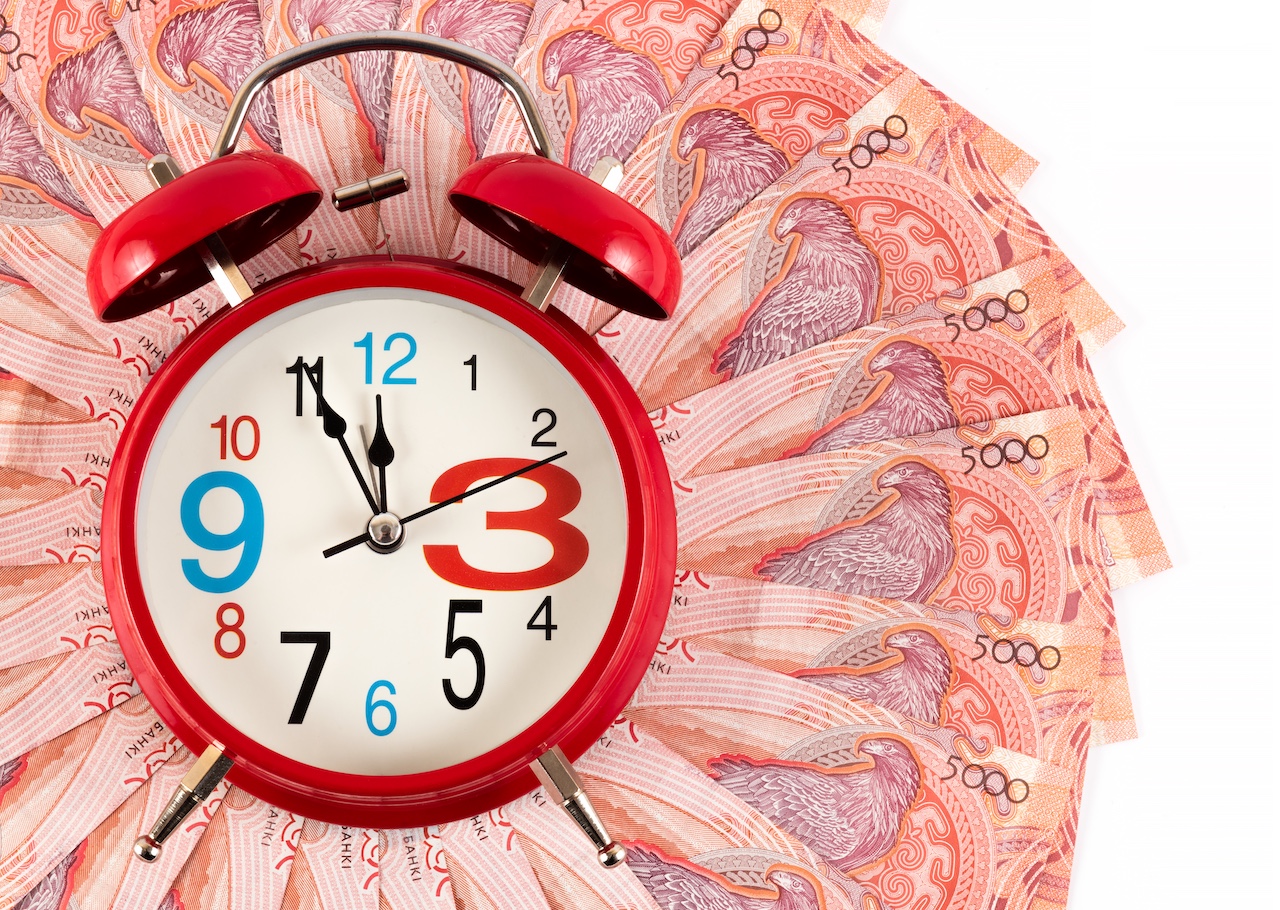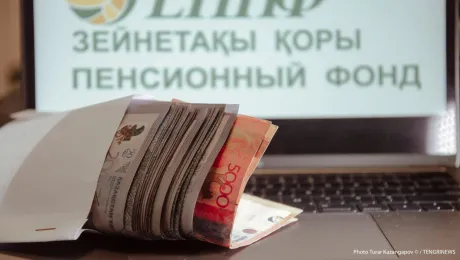Dividend season and its impact on share prices
The first steps of future market dynamics are laid as early as February, when Kazakh companies begin reporting for the fourth quarter and the entire previous year. At this stage, investors form an understanding of what size of dividends an issuer might pay. If the year has been successful, the period from February to mid-April often sees a solid increase in the KASE index, driven by purchases of shares in anticipation of planned dividends. We refer to this period as the dividend season. Historical data shows that from 2017 to 2025, during the dividend season, the KASE index has grown by an average of 4.2%. Of course, there are situations where prices fall, but the reasons may be the same – the risks of reduced or entirely canceled dividends act as a negative factor for investors. An example of such a period is 2020, when the coronavirus epidemic led most of the market’s key dividend-paying companies to cancel or postpone their payouts. A similar situation occurred in February 2022, when the market was gripped by uncertainty due to the start of the war between Russia and Ukraine. Both cases are more accurately described as non-standard market situations, also known as “black swans.” If these two years are excluded from the retrospective statistics, then from 2017 to 2025 the average growth of the KASE index during the dividend season is 7%.
It is noteworthy that while dividends are a positive factor for shares during the dividend season, they often become a negative factor afterward. The reason for this trend is that, unlike bonds, dividends on shares can only be received if you are a shareholder on a specific date – the so-called record date. This prompts investors to buy shares before the record date and sell them afterward. However, in recent years we have noticed that the drop in share prices after dividend payments has been decreasing, which, in our view, is a sign of more in-depth analysis of issuers by investors and their positive long-term expectations for them.
For the local investor, dividend payments remain one of the most important factors when choosing stocks. We often encounter situations where shares rise by more than the expected dividend yield, and conversely, shares fall by more than expected after the record date. The refusal to pay dividends, even with a low yield, reduces the attractiveness of the shares to the point of disappointment, as was the case with Air Astana last year. Investor sentiment also changed significantly toward KazTransOil – once the best dividend stock on the market – after the company sharply reduced its dividend payments.
Dividend leaders in the market
In the KASE index, 8 out of 10 stocks pay dividends – Halyk Bank, KEGOC, Air Astana, KazMunayGas, Kaspi.kz, Kazatomprom, Kazakhtelecom, and KazTransOil. Bank CenterCredit has not yet made any payments, and Kcell stopped paying them in 2021. Dividend yield can be assessed in different ways – at the time the board of directors’ recommendation is published, at the time payouts are approved at the annual or extraordinary general meeting of shareholders, or before the record date of dividends. We mainly use the 12-month dividend yield calculated in the Bloomberg trading terminal – the sum of gross dividends per share with record dates in the past 12 months, divided by the current share price.
The chart above shows the annual dynamics of the 12-month dividend yield of stocks in the KASE index from July 2024 to June 30, 2025. The highest figure in this case belongs to Kazakhtelecom shares, with a yield of 16.64%. However, it is worth making an important note: at the annual general meeting of shareholders, Kazakhtelecom approved increased special dividends in the amount of 26,664.88 tenge, which represents the distribution of funds after the sale of two mobile operators, Altel and Tele2. This is more than 12 times the payments of the previous year. Given the one-off nature of such dividends, it is more logical to take as a basis the yield before this payment, which was 3.6%.
Given that the stability of a high dividend yield is our priority, we consider Halyk Bank (HSBK) shares, with a yield of 12.4%, to be the leader and most reliable dividend stock in the KASE index. The bank’s average annual dividend growth over the past 5 years has been 26%. Moreover, last year the company decided to pay dividends twice a year, like KEGOC. In addition to its excellent dividend performance, Halyk Bank also has strong fundamentals, attractive valuation multiples, and share price growth potential, making HSBK shares the best portfolio choice for a long-term investor on KASE.
In second place in terms of dividend yield is KEGOC. Investors may not immediately appreciate the size of the dividends since they are paid twice a year, but the 12-month yield of the shares is only slightly lower than that of Halyk Bank, at 11.6%. At the same time, KEGOC stands out for its high price stability. The beta coefficient (a financial metric measuring stock volatility compared to the overall market) of KEGOC shares to the KASE index is only 0.43. For example, if the KASE index rises or falls by 10%, KEGOC shares will rise or fall by 4.3%, respectively. Combined with a high dividend yield, the shares are an excellent choice for a long-term portfolio as a defensive instrument. The average annual dividend growth of the shares over the past 5 years is 9%.
In third place in terms of yield are KazTransOil shares – once the “dividend king” of the Kazakh market, paying more than 100% of net profit as dividends. This policy was related to the “People’s IPO” program in which the company participated. However, in 2022 KazTransOil significantly reduced the level of dividends, paying only 26 tenge per share. For comparison: since the IPO in 2015, the company has paid its shareholders an average of 131.7 tenge per year. The most recently approved dividends were 65 tenge per share, which is twice as much as in 2022. The dividend yield of the shares as of June 30 was just over 8%.
Next, unexpectedly, is Air Astana with a yield of 7.33%. The company, both before and after its IPO, did not position itself as a dividend stock, but its refusal to pay in 2024 seriously hurt the popularity of its shares among retail investors. This year it paid 53.7 tenge per share, which is actually a solid figure. Nevertheless, this did not spark renewed interest in the shares, leaving AIRA stock with significant long-term potential for price growth.
In fifth place are the shares of Kazakhstan’s fintech giant, Kaspi.kz. It is the only company in the local market that pays quarterly dividends. It should be noted that it announced the skipping of two quarterly payments due to expenses for the acquisition and development of the Turkish marketplace Hepsiburada. This is a logical decision during a transition period, when the company has already achieved all its goals in Kazakhstan and is now seeking new markets to enter. This opens up significant growth potential, but also adds long-term risks in executing its business strategy in a country as economically challenging as Turkey. Incidentally, we often notice that our clients confuse Kaspi.kz and Kaspi Bank in news related to dividend payments. Kaspi Bank makes higher payouts, but those securities are not traded on the market, and the shares investors own legally belong to a completely different company – Kaspi.kz.
Just slightly behind Kaspi.kz is Kazatomprom, a solid mid-tier player in the market with significant long-term growth potential due to its role in the uranium sector. The company pays dividends not from net profit, but according to the formula of 75% of operating cash flow. Over the past 5 years, the size of dividends has grown on average by 30% per year. It should be noted that the company is a dollar exporter, which protects its income from inflation and depreciation of the tenge.
Slightly less than Kazakhtelecom’s dividends are paid by KazMunayGas. Interestingly, the dividend yield of the shares decreases every year, but not because the amount of the payouts is reduced (in fact, they have remained unchanged), but because the company’s share price has steadily risen each year. Since its IPO, KazMunayGas has paid the same amount for three consecutive years – 491.71 tenge per share.
For the Kazakh stock market, dividends from local companies are a fairly important component, sometimes having a strong influence on share prices. Dividend payments are mainly made from May to June, which attracts a large number of investors, enough to create a seasonal movement in the market.








